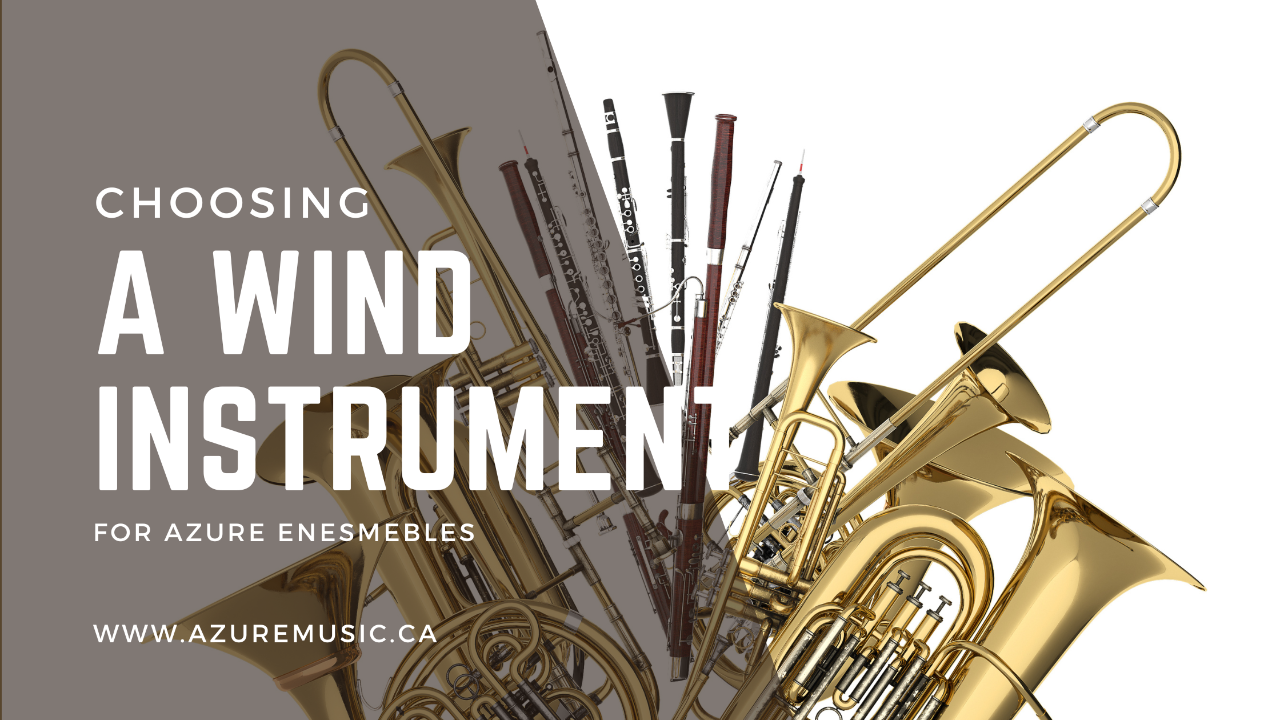How to Choose A Wind Instrument for Band Class: Azure Ensembles
Apr 01, 2025
Azure Ensembles offers a unique homeschool band ensemble program. Joining the ensemble class (band class) is an exciting opportunity for young musicians. It’s a chance to learn new skills, make friends, and create beautiful music. One of the first and most important decisions you’ll need to make is choosing the right wind instrument. With so many options available, it can be a bit overwhelming. Here’s a guide to help you make an informed choice and find the perfect wind instrument for you.
1. Consider Your Interests and Influences
Think about the music and musicians you enjoy. Are there any particular instruments that stand out to you? If you’re inspired by jazz, you might be drawn to the saxophone. If classical music is your thing, perhaps the flute or clarinet will appeal to you.
- Listen to Different Instruments: Spend some time listening to recordings of different wind instruments. Pay attention to the sound and see which one you feel most excited about. Youtube and google searches can be a great place to start and learn about the different types of wind instruments.
2. Understand the Types of Wind Instruments
Wind instruments are generally divided into two categories: woodwinds and brass.
- Woodwinds: Include the flute, clarinet, oboe, bassoon, and saxophone. These instruments produce sound by blowing air through a mouthpiece with a reed or across an opening.
- Brass: Include the trumpet, trombone, French horn, and tuba. These instruments produce sound by buzzing your lips into a mouthpiece.
Each instrument has its own unique sound, playing technique, and role in a band.
3. Consider Physical Requirements
Different instruments have different physical demands. Consider the size of the instrument, the physical effort required to play it, and how comfortable it feels.
- Flute: Lightweight and easy to carry, but requires good breath control.
- Clarinet: Also lightweight and fairly easy to handle, with a single reed mouthpiece.
- Saxophone: Heavier than the flute and clarinet, but has a comfortable playing position and a wide range of sizes.
- Trumpet: Compact and requires strong lip muscles for buzzing.
- Trombone: Requires arm length to reach different slide positions and strong breath support.
- French Horn: Has a unique playing technique and requires good breath control and lip strength.
- Tuba: The largest and heaviest, requiring strong breath support and good physical endurance.
4. Try Before You Decide
If possible, try out a few different instruments before making your decision. Many music stores offer rental programs that allow you to try an instrument for a few months. Some stores in the Edmonton area include; Long & McQuade, The Bandstand and St. John's Music.
- Feel the Fit: Pay attention to how each instrument feels in your hands and mouth. Is it comfortable to hold and play?
- Sound Production: Try producing a sound on each instrument. Some may feel more natural and easier to play than others.
5. Consider Your Musical Goals
Think about your long-term musical goals. Do you see yourself playing in a concert band, a jazz ensemble, or even a marching band? Different instruments are suited to different types of music and ensembles.
- Versatility: Instruments like the saxophone and trumpet are very versatile and used in a wide range of musical styles such as classical, jazz, contemporary music and rock music.
- Commonality: The most common instruments in the Azure Ensembles program are the flute, clarinet, saxophone, trumpet, trombone and tuba.
- Specialization: Instruments like the oboe or bassoon are more specialized and often have unique roles in orchestras and concert bands.
6. Consult with Your Band Director or Music Teacher
Your band director or music teacher can provide valuable guidance based on their experience and knowledge of your abilities. They can help you understand the pros and cons of each instrument and suggest which ones might be a good fit for you. Feel free to reach out to Azure Ensembles with your questions and we can help asses these areas.
- Skill Level: They can assess your current skill level and recommend instruments that match your abilities.
- Ensemble Needs: They can also inform you about the needs of the band. Sometimes, certain instruments are in higher demand, which might influence your decision.
7. Think About Maintenance and Cost
Some instruments require more maintenance and care than others. Additionally, the cost of an instrument can vary widely.
- Maintenance: Instruments like the clarinet and saxophone require regular reed replacement. Brass instruments need regular cleaning and valve oiling.
- Cost: Consider the cost of purchasing or renting the instrument, as well as any additional accessories like mouthpieces, reeds, or cleaning supplies.
What an exciting time picking your instrument! We can't wait to learn music together i
Lorem ipsum dolor sit amet, consectetur adipiscing elit. Cras sed sapien quam. Sed dapibus est id enim facilisis, at posuere turpis adipiscing. Quisque sit amet dui dui.
Stay connected with news and updates!
Join our mailing list to receive the latest news and updates from our team.
Don't worry, your information will not be shared.
We hate SPAM. We will never sell your information, for any reason.
